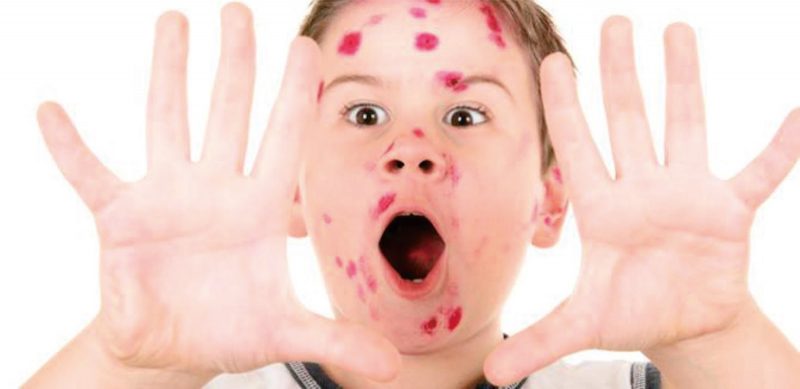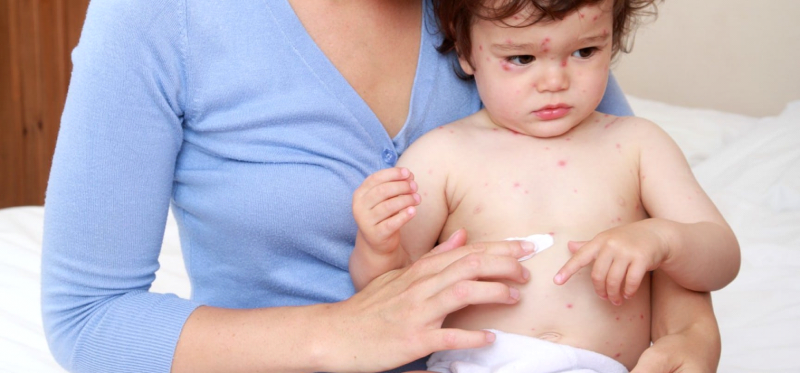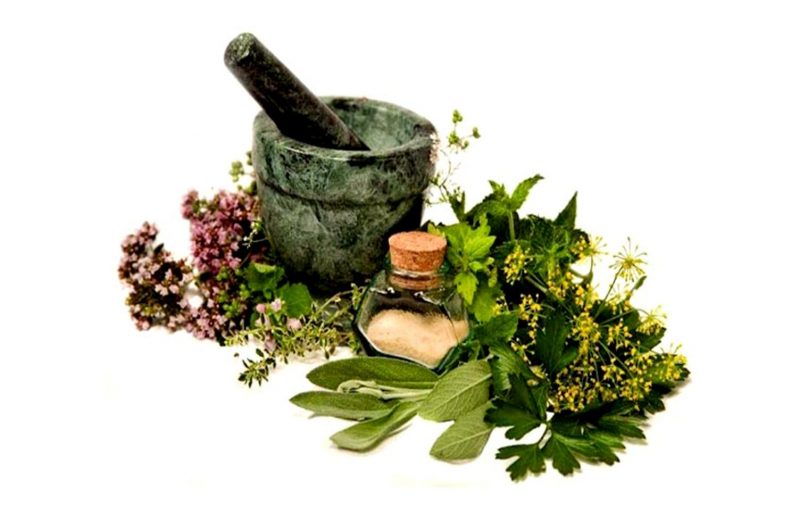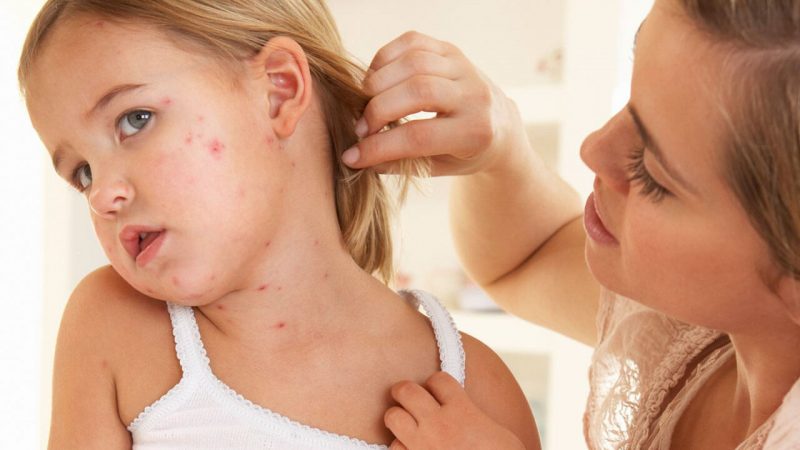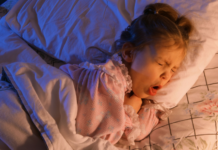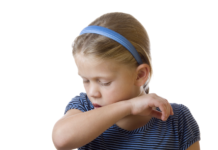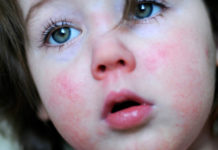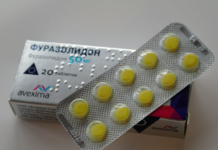Chicken pox is an infectious disease that leads to the formation of a blistering rash throughout the body. The main objective in the treatment is to eliminate suppuration in place of the appearing vesicles. Therefore, the question arises: how to relieve itching with chickenpox in a child in order to prevent complications of the disease.
Material Content:
Why does chickenpox itch
The main symptom of chickenpox is a rash that appears on all parts of the body. (including on the mucous membranes), with the exception of the palms and feet. This is due to the fact that the causative agent is the herpes virus of the third type, which generates allergic reactions in the form of skin itching, redness and vesicles.
In children with a tendency to bright allergic reactions and asthma, more pronounced symptoms are observed.
Therefore, at the first manifestations, it is necessary to take measures to reduce the effect of the virus on the body:
- Follow a diet that excludes allergens from food.
- Take prophylactic antihistamines (if prescribed by your allergist or pediatrician).
- Do not violate the hypoallergenic environment of the housing, perform wet cleaning according to the established schedule.
In children with normal immunity, allergic reactions are also observed. Often, pediatricians prescribe therapy using drugs such as Suprastin or Fenistil. This can greatly relieve itching with chickenpox.
How to handle wounds
The treatment of small (no more than 2 mm in diameter) rashes is the most important process in the treatment of chickenpox.After all, the consequences in the form of scars remain precisely because of errors at this stage of treatment. The most popular solution is the use of solutions of brilliant green or fucorcin. These are proven substances that help prevent the formation of ulcers and accelerate the process of drying out the rash that has appeared. However, there are more modern remedies that also have a local cooling or antihistamine effect, which helps relieve itching.
Such medicines include ointments:
- "Calamine Lotion";
- PoxClean;
- Tsindol;
- "Kalmosan" lotion or ointment, as well as many other analogues.
It is important to be able to process rashes in all foci so that the resulting bubbles with liquid become crusty as quickly as possible.
This will help accelerate the active course of the disease and reduce the likelihood of smallpox.
How to relieve itching with a disease
Rashes that occur against the background of a viral disease are, of course, an unpleasant aspect of the course of the disease. However, the main concern is the constant, ongoing itching. Therefore, with chickenpox in young children during the onset of the first symptoms, you need to cut off your nails as short as possible to prevent infection in the wounds. With older children it is necessary to talk and explain the effects of combing. In addition, parents have an important task - to facilitate the course of the disease. To do this, you can choose either medication, which the doctor will prescribe, or use traditional medicine methods.
Medication
Antihistamines for both oral and surface treatment should be prescribed by a doctor in a dose appropriate for the age. Self-administration can lead to an overdose and the appearance of unwanted reactions. Usually for the treatment of children, drugs with a mild effect are chosen that have a mild sedative effect and relieve nervous tension. It is important to choose a remedy in such a way as to minimize the likelihood of side effects.
The following drugs do an excellent job of this task:
- "Diazolin" - has an antiallergic effect with a minimal likelihood of adverse reactions;
- "Suprastin" - a more powerful antihistamine with a pronounced sedative effect;
- "Loratadine" - relieves itching, but it is impossible to use before the age of two years;
- "Peritol" - the drug is widely used in pediatrics due to its pronounced sedative effect, which helps normalize sleep and relieve nervousness;
- "Fenistil" - blocks specific histamine receptors, without causing drowsiness or loss of concentration.
It should be understood that one or another drug should be selected under the supervision of a specialist who can fully take into account all possible complications and contraindications.
Folk remedies
Many parents are inclined to use exclusively natural remedies when treating children, which makes us look for methods to relieve itching with chickenpox in traditional medicine. The most famous sedative effect is chamomile or calendula. It is necessary to prepare a decoction in a water bath, moisten a sterile swab in the solution and treat the affected area. Tea tree oil also has an antipruritic effect, and also disinfects the skin during the spot treatment of each vial.
An important aspect is concomitant therapy, which should provide a decrease in intoxication of the body, increase immunity. Therefore, it is necessary to provide the child with a plentiful warm drink with a high content of vitamin C, for example, tea with lemon, viburnum, cranberries or dogrose is suitable. However, it should be noted that the effectiveness of treatment with folk remedies is much lower than with correctly selected drugs.
General recommendations
There are a number of recommendations, the observance of which will help not only to cure chickenpox faster, but also facilitate the course of the disease. It is worth considering the main ones and determining how much your child needs them.
- Prescribing antiviral drugs. Contrary to the popular belief that chickenpox in children passes almost without outside interference, this is not entirely true. Chicken pox is a herpes virus, which can be influenced with antiviral drugs. One of the often prescribed is Viferon, which has become widespread due to the minimum list of contraindications and the possibility of admission during pregnancy and from the first day of the baby’s life. However, Acyclovir is a more suitable drug, the action of which is aimed at combating herpes cells. Due to the different form of release, it is possible both a local effect on certain areas of the skin, and the fight against the virus at the cellular level.
- Temperature reduction. During the rash (there may be up to five of them for the entire duration of the illness), a fever is possible. Depending on the individual characteristics of the child's body, fluctuations can reach 39 degrees Celsius. In this case, it is simply necessary to lower the temperature because of the detrimental effect on the cardiovascular and nervous systems. But a small increase to 37.5 degrees should be left under control, but you should not take any drugs. Note that the use of aspirin is prohibited, since this medicine has a strong effect on the liver. In combination with a viral infection, this can negatively affect the general condition of the patient.
- Refusal of water procedures. The incubation period of chickenpox lasts up to three weeks. In this regard, it is sometimes difficult to determine the time of infection and help the body. But as soon as the first focus of the rash appears, it is worth giving up water procedures until the fifth day from the moment of formation of the last rashes. This will help to eliminate the spread of infection to less accessible areas and relieve the likelihood of violation of the integrity of the skin.
Chicken pox is not an extremely dangerous disease. It is important to exclude the possibility of complications and carefully observe the instructions of the pediatrician. Once having recovered, a person develops antibodies that resist repeated infection for life. It is possible to get the vaccine of your own free will (the vaccine is not included in the list of obligatory in our country), however, the immunity obtained after the disease is much stronger than artificial.


